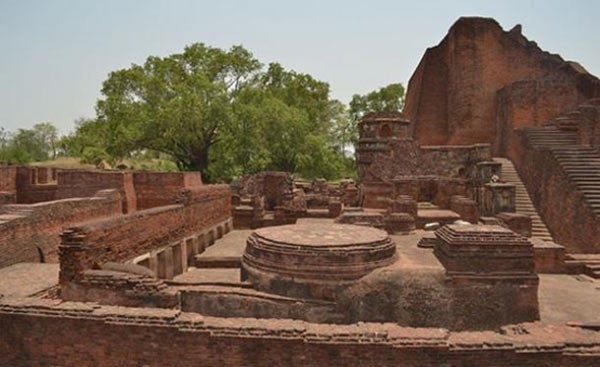Ancient Nalanda University resumes today after 800 year break

Nalanda University was an ancient centre of learning in India, and among the first great universities in recorded history, predating such institutions of higher learning like Al-Azhar in Egypt (10th century AD), the University of Bologna in Italy (11th century AD), and Oxford University in England (12th century AD).
It was also the first
ever residential university in the world, holding capacity for thousands of
students to stay on campus in dorms. In the 12 th century, the university was
decimated by invaders. But now, for the first time in 800 years, the spirit of
Nalanda University revives again as classes begin today at its newly
established campus in Rajgir, just 12km away from the original site.
Nalanda University was founded as early as the 5th century AD in the north eastern Indian state of Bihar. During its heyday, Nalanda could boast of its capacity to accommodate 10,000 students and 2,000 professors.
One of the interesting aspects of Nalanda University was its intake of ‘international students’ from as far away as Korea, Japan, China, Tibet, as well as Southeast, Central, and Western Asian regions. Nalanda University’s appeal to scholars from these regions was due to the fact that it was one of the most important seats of learning in the Buddhist world. But despite its focus on the study of Buddhism, students at Nalanda University were allowed to pursue other areas of secular knowledge, such as the fine arts, medicine, astronomy, mathematics, politics, and even the art of war. As a result, numerous illustrious thinkers were associated with the university.
The real blow to Nalanda came
with the arrival of Muslim invaders in 1197 led by Mohammad Bakhtiyar Khilji, a
general of Qutbuddin Aibak, who were intolerant of other religions and
cultures. Much of the university was
demolished, its priceless library was burnt down, and many of its scholars,
including Buddhist monks, were mercilessly slaughtered, in what was one of the
greatest acts of cultural vandalism in India.
While most of the ancient
campus of Nalanda was left in ruins, the spirit and values upon which it was
created remained, and have been imbued within the new university which opens
today. The university website states:
Its primary function must be to harness the best talents for the creation and dissemination of new knowledge as well as for the recovery and restoration of valuable old insights which have suffered unintended neglect. Nalanda has to be open to students from across the world chosen for their desire for and capacity to absorb knowledge in diverse fields.
It must have once again, as it did before, the best scholars and
researchers to create and recreate knowledge. It must afford them a vibrant
living environment which will also be suitable for the nurture of the next
generation – the children of those creating and recreating the centre of
excellence. It must be adapted to the rhythm of Nature where it is located and
enrich the lives of the people in the neighbourhood. Nalanda will be new but it
will aspire to be as good as its old self, if not better.
The university’s chancellor, Amartya Sen, is confident that the new Nalanda University will be a success. Whilst the original Nalanda University took about 200 years to achieve prominence, Sen believes that the new university will be able to establish its place in the academic world in just a few decades.
Featured image: The remnants
of the library of Nalanda University.
Source: Ancient-origins.net
Writer: April Holloway

Add New Comment